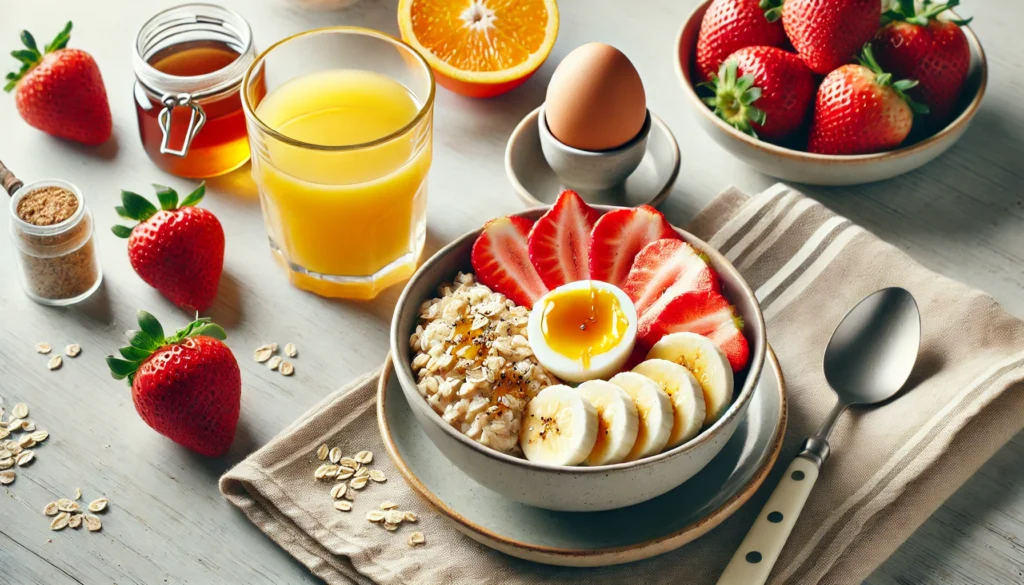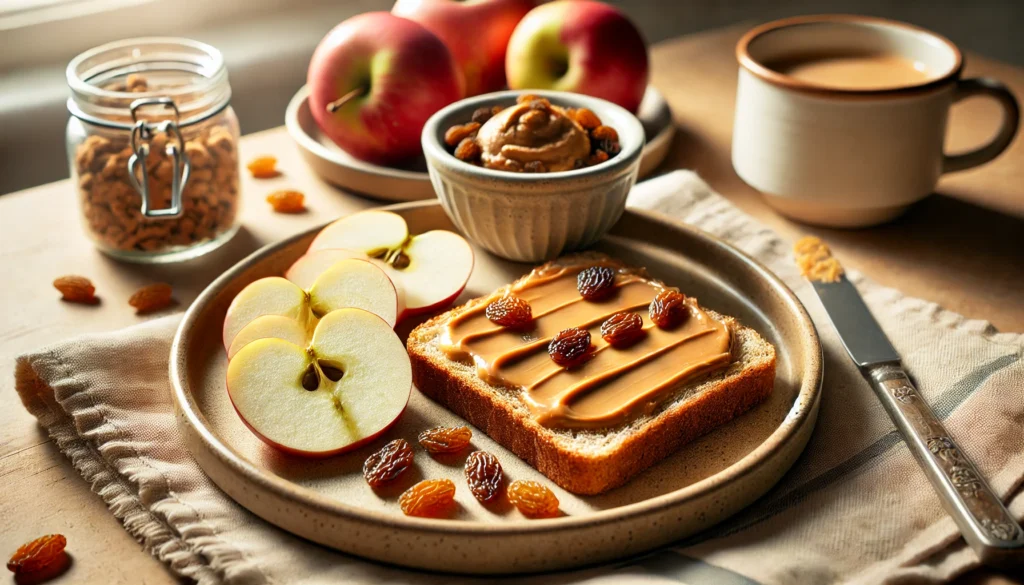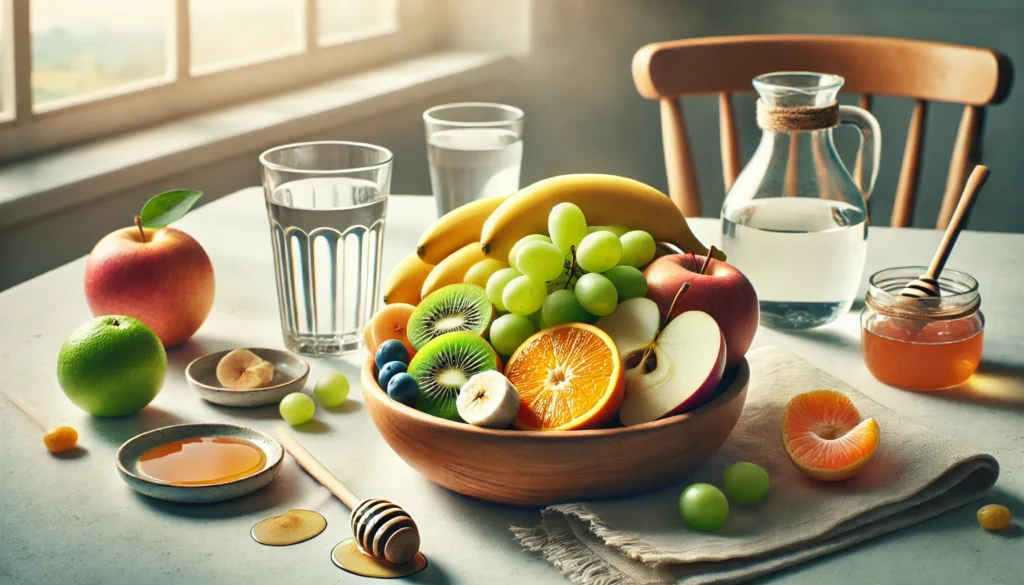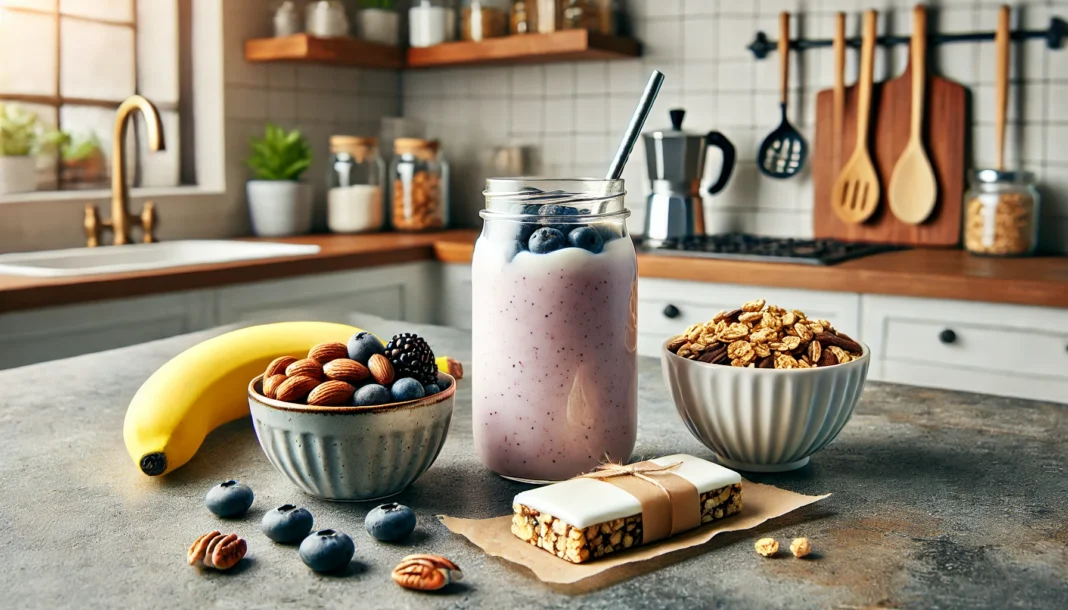Maintaining balanced blood sugar levels is crucial for overall health and well-being. However, there are times when blood sugar drops too low, a condition known as hypoglycemia, which can cause symptoms such as dizziness, confusion, fatigue, and even loss of consciousness. Understanding what to eat when blood sugar is low is essential for quickly and safely restoring balance. This article delves into the science-backed foods that can effectively bring up blood sugar levels, how to boost sugar levels efficiently, and the best dietary practices for sustaining stable glucose levels over time.
You may also like: How Diabetes Affects the Brain: Understanding Brain Fog, Memory Loss, and Mental Confusion from High Blood Sugar
Understanding Low Blood Sugar: Causes and Symptoms
Hypoglycemia occurs when blood glucose levels drop below the normal range, typically below 70 mg/dL. It is most commonly associated with diabetes management, especially when insulin or other glucose-lowering medications are used. However, non-diabetic hypoglycemia can also occur due to prolonged fasting, excessive alcohol consumption, intense exercise, or certain medical conditions. Recognizing the symptoms of low blood sugar is critical to addressing the issue promptly.
The early symptoms of low blood sugar include shakiness, sweating, rapid heartbeat, irritability, and hunger. If left untreated, more severe symptoms such as confusion, blurred vision, slurred speech, and even seizures or unconsciousness can develop. Knowing what foods to bring up blood sugar quickly can help prevent these complications and restore normal function.

Fast-Acting Carbohydrates for Immediate Blood Sugar Recovery
When blood sugar levels drop too low, the fastest way to raise them is by consuming quick-digesting carbohydrates. These are simple sugars that are rapidly absorbed into the bloodstream, providing immediate relief from hypoglycemic symptoms. The ideal choice is a food or beverage containing approximately 15 grams of fast-acting carbohydrates.
Glucose tablets or gels are specifically designed for rapid absorption and are one of the most efficient ways to correct hypoglycemia. If these are unavailable, fruit juices such as orange or apple juice can provide a similar effect. A half-cup of fruit juice delivers about 15 grams of carbohydrates and can quickly restore blood sugar levels. Other excellent options include regular (non-diet) soda, honey, or maple syrup. These liquid or semi-liquid forms of sugar bypass digestion and enter the bloodstream swiftly, offering fast relief from hypoglycemic symptoms.
Choosing the Right Fruits to Elevate Blood Sugar Quickly
Fruits are a natural source of carbohydrates, providing an effective way to raise blood sugar while also supplying essential vitamins, minerals, and fiber. However, some fruits work better than others in rapidly increasing blood glucose levels. Bananas, grapes, and watermelon are among the best choices because they contain high amounts of natural sugars, such as glucose and fructose, which are absorbed quickly.
Bananas are particularly effective because they contain both simple and complex carbohydrates. A medium-sized banana provides about 27 grams of carbohydrates, making it an excellent choice for boosting blood sugar levels. Grapes are another quick option, with their natural sugars rapidly entering the bloodstream. A small handful of grapes can provide nearly 15 grams of carbohydrates, offering immediate relief from hypoglycemia. Watermelon, due to its high glycemic index, is also rapidly absorbed and can help restore blood glucose levels quickly.
Dairy Products as a Dual-Action Solution for Hypoglycemia
Dairy products such as milk and yogurt can be an effective way to manage blood sugar lows, as they contain both lactose (a natural sugar) and protein. The combination of carbohydrates and protein makes dairy a well-rounded option, providing an initial blood sugar boost while also preventing subsequent crashes. A glass of skim or low-fat milk provides about 12 grams of carbohydrates and can be consumed quickly for fast relief.
Greek yogurt with fruit is another beneficial choice. It contains carbohydrates from natural fruit sugars and lactose, along with protein to sustain energy levels over time. Opting for a plain, unsweetened yogurt with a bit of honey or fresh fruit can strike the right balance between rapid glucose recovery and prolonged stability.
Whole Grains and Starches for Sustained Blood Sugar Stability
While fast-acting carbohydrates are essential for immediate relief, incorporating complex carbohydrates can help maintain stable blood sugar levels over a longer period. Whole grains such as oatmeal, whole wheat bread, and brown rice contain fiber, which slows digestion and prevents rapid fluctuations in glucose levels.
Oatmeal is an excellent choice for maintaining blood sugar balance due to its soluble fiber content, which helps regulate glucose absorption. Whole wheat bread with a small amount of natural peanut butter provides a blend of carbohydrates, protein, and healthy fats, supporting blood sugar stability. Brown rice and quinoa, rich in fiber and essential nutrients, also contribute to a more sustained glucose response.
Nuts and Seeds: A Balanced Approach to Glucose Control
Nuts and seeds are nutrient-dense foods that provide a combination of healthy fats, protein, and carbohydrates, making them an excellent choice for balancing blood sugar. Almonds, cashews, and peanuts contain small amounts of carbohydrates but are rich in fiber and protein, which help stabilize glucose levels.
Chia seeds and flaxseeds, when soaked in liquid, form a gel-like consistency that slows glucose absorption, preventing blood sugar spikes and crashes. Pairing nuts and seeds with a carbohydrate source, such as whole grain crackers or fruit, can help regulate blood sugar levels effectively.
The Role of Proteins in Blood Sugar Management
Proteins do not directly raise blood sugar levels but play a crucial role in preventing subsequent drops. Including a protein source in meals or snacks can help slow the absorption of carbohydrates, leading to more stable glucose levels.
Lean proteins such as eggs, chicken, and fish provide sustained energy without spiking blood sugar. Cottage cheese and tofu are also excellent protein-rich choices that complement carbohydrate-containing foods. By pairing proteins with carbohydrates, the body experiences a slower, more controlled glucose release, reducing the likelihood of hypoglycemia episodes.
Hydration and Blood Sugar Regulation
Proper hydration plays a key role in blood sugar management. Dehydration can worsen hypoglycemia symptoms and make it harder for the body to regulate glucose levels effectively. Water is the best choice for staying hydrated, but beverages like coconut water and electrolyte-enhanced drinks can provide an additional glucose boost when needed.
Coconut water contains natural sugars and essential electrolytes such as potassium and magnesium, which help maintain fluid balance and prevent blood sugar crashes. Herbal teas without added sweeteners can also support hydration without causing fluctuations in glucose levels.

Frequently Asked Questions: Managing and Responding to Low Blood Sugar
1. How does emotional stress influence low blood sugar episodes, and what should you eat to stabilize quickly?
Emotional stress can significantly affect blood sugar stability, often causing unpredictable fluctuations. When cortisol levels spike due to anxiety or panic, your body may burn through glucose more quickly or struggle to maintain normal levels. In such situations, knowing what to eat when blood sugar is low becomes even more critical. Choose foods that not only raise glucose but also support neurotransmitter balance—like a banana with almond butter or yogurt with honey. These options work well because they address both immediate glucose needs and emotional well-being, making them ideal foods to bring up blood sugar in stress-induced episodes.
2. Are there lifestyle strategies beyond food that help regulate sudden drops in blood sugar?
Absolutely. While it’s essential to know how to raise blood sugar levels fast, non-dietary interventions also play a role in long-term regulation. Moderate exercise, like walking, can enhance insulin sensitivity over time, reducing frequency of hypoglycemia. Meanwhile, mindfulness practices and sleep hygiene indirectly help stabilize cortisol and glucose levels. However, during an acute episode, focus on what to eat when blood sugar is low—preferably a mix of glucose and slow-digesting carbs. Even with good habits, having reliable foods to bring up blood sugar on hand remains vital for emergency readiness.
3. Why do some people experience low blood sugar without having diabetes?
This phenomenon, called reactive hypoglycemia, often occurs after meals high in refined carbs. It’s a condition where insulin overshoots, causing glucose to crash. Even non-diabetics need to understand how to boost sugar levels when this happens. Having easily digestible, moderate glycemic index snacks like dried fruits, pretzels, or low-sugar granola bars can help. In these cases, understanding what to eat when blood sugar is low isn’t just for diabetics—it’s crucial for anyone with metabolic sensitivities. Educating yourself about foods to bring up blood sugar ensures better preparedness and prevention.
4. What are some overlooked but effective foods to bring up blood sugar naturally?
Most people know about candy or juice, but there are lesser-known options that can be even more effective. For example, dates, figs, and papaya have a naturally high glucose-to-fructose ratio, making them excellent choices when figuring out how to raise blood sugar levels fast. Another powerful combo is a rice cake topped with honey and peanut butter—it offers quick carbs with a protein buffer to sustain energy. Knowing what to eat when blood sugar is low goes beyond the basics; explore culturally diverse and nutrient-rich options. These alternative foods to bring up blood sugar often offer better long-term metabolic support.
5. Can chronic low blood sugar affect cognitive performance, and how should it be managed nutritionally?
Yes, recurrent hypoglycemia can impair memory, attention, and decision-making. To counteract this, it’s vital to know what to eat when blood sugar is low, especially if you’re preparing for mentally demanding tasks. A strategic snack like whole-grain toast with honey or a fruit smoothie with oats can provide a steady rise in glucose. These foods to bring up blood sugar also help prevent the post-crash slump that follows high-sugar options. Prioritizing brain-supportive nutrients like B-vitamins and magnesium alongside glucose-boosting strategies is a smart way to boost sugar levels while protecting cognitive function.
6. What are the best portable options for how to raise blood sugar levels fast when you’re on the go?
If you’re traveling or in a situation where food access is limited, convenience is key. Keep glucose gel packets, fruit leather strips, or trail mix with dried cherries and nuts in your bag. These are practical examples of foods to bring up blood sugar quickly while requiring no refrigeration. For those wondering how to raise blood sugar levels fast without processed candy, a ripe banana or a small box of raisins can work wonders. Knowing what to eat when blood sugar is low during travel can prevent medical emergencies. Preparation is your best tool for maintaining safe glucose levels wherever you are.
7. How can athletes manage their blood sugar levels during extended workouts?
Athletes face unique challenges when it comes to hypoglycemia, especially in endurance sports. During training, it’s essential to know how to raise blood sugar levels fast without spiking and crashing. Many turn to glucose tablets or electrolyte drinks with added sugars. Post-workout, focus on what to eat when blood sugar is low, such as a smoothie with banana, protein powder, and oats. These foods to bring up blood sugar help replenish glycogen stores efficiently. Athletes should also track their symptoms and adjust their intake accordingly to continuously boost sugar levels without disrupting performance.
8. What role do protein and fat play in stabilizing blood sugar after an acute drop?
While carbs are the immediate fix, pairing them with protein and healthy fats slows digestion and prevents another crash. For instance, knowing what to eat when blood sugar is low should include options like Greek yogurt with berries or toast with avocado and eggs. These combinations provide both immediate and sustained energy. Once you’ve used foods to bring up blood sugar, protein and fat help regulate your insulin response. It’s not just about how to raise blood sugar levels fast—it’s also about how to keep it from dropping again. Strategically combining macronutrients ensures more stable glucose over time.
9. How does aging affect your body’s response to low blood sugar?
As we age, hormonal changes and medication sensitivities can increase vulnerability to hypoglycemia. Older adults may have a delayed response to symptoms or be on medications that mask the warning signs. That’s why understanding how to raise blood sugar levels fast becomes even more essential with age. For seniors, what to eat when blood sugar is low should emphasize easy-to-chew, quickly digestible options like applesauce, graham crackers with honey, or soft fruit. Choosing the right foods to bring up blood sugar also means considering dietary restrictions, like reduced sodium or low-fiber needs, for safe and effective treatment.
10. Are there emerging technologies or tools that help manage low blood sugar more effectively?
Yes, recent innovations like continuous glucose monitors (CGMs) and smart insulin pens are revolutionizing blood sugar management. These tools provide real-time alerts, helping users know precisely when and how to boost sugar levels before symptoms escalate. They also allow for data-driven choices about what to eat when blood sugar is low based on trend patterns. Some apps even recommend personalized foods to bring up blood sugar based on activity, meals, and biometrics. This tech-forward approach makes it easier than ever to learn how to raise blood sugar levels fast—and keep it steady afterward.

Final Thoughts on Managing Low Blood Sugar with the Right Foods
Knowing how to raise blood sugar levels fast and safely is essential for anyone prone to hypoglycemia. Choosing the right foods to bring up blood sugar quickly, such as fast-acting carbohydrates, fruits, and dairy products, can help alleviate symptoms immediately. Incorporating whole grains, proteins, nuts, and seeds into meals can provide long-term blood sugar stability, reducing the risk of further dips. Hydration is another key factor in maintaining glucose balance and preventing blood sugar fluctuations.
By understanding what to eat when blood sugar is low and how to boost sugar levels effectively, individuals can take proactive steps to manage their health. A well-balanced approach that includes both quick-digesting and slow-releasing carbohydrates, along with protein and healthy fats, can create a stable foundation for overall well-being. Making informed dietary choices ensures that blood sugar levels remain within a healthy range, promoting sustained energy and optimal health.
low blood sugar diet, foods to stabilize glucose, natural ways to raise blood sugar, healthy carbs for hypoglycemia, best snacks for low blood sugar, fast-acting glucose foods, how to prevent blood sugar crashes, managing hypoglycemia naturally, whole foods for blood sugar balance, nutrition tips for diabetes management, how to handle low blood sugar symptoms, best drinks for blood sugar recovery, quick carb sources for energy, safe ways to boost glucose, protein-rich foods for glucose control, hydration and blood sugar stability, top fruits for blood sugar regulation, balancing macronutrients for energy, meal planning for blood sugar support, effective blood sugar recovery strategies
Further Reading:
What Can You Do to Raise Your Blood Sugar Quickly?
10 Ways to Treat Low Blood Sugar with Real Food
Which foods can help to lower and control blood sugar?
Disclaimer: The content published on Better Nutrition News (https://betternutritionnews.com) is for informational and educational purposes only. It is not intended as a substitute for professional medical advice, diagnosis, or treatment. Always seek the guidance of a qualified healthcare professional before making any changes to your diet, nutrition, or wellness practices. The opinions expressed by authors and contributors are their own and do not necessarily reflect those of Better Nutrition News.
Better Nutrition News and its affiliates make no representations or warranties regarding the accuracy, completeness, or reliability of the information provided. We disclaim all liability for any loss, injury, or damage resulting from the use or reliance on the content published on this site. External links are provided for reference purposes only and do not imply endorsement.



